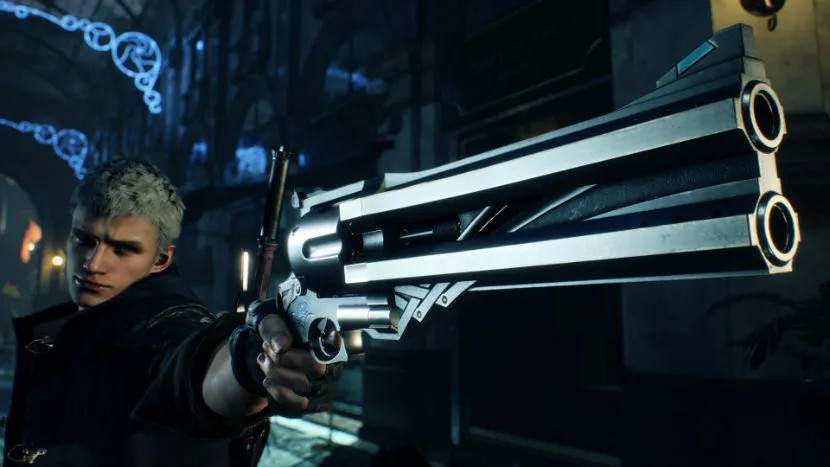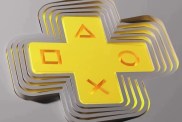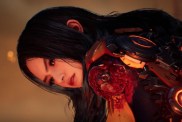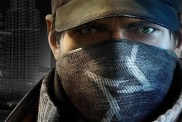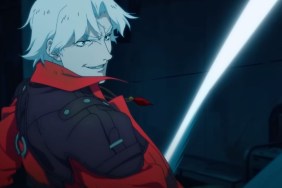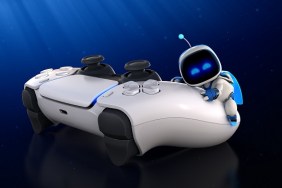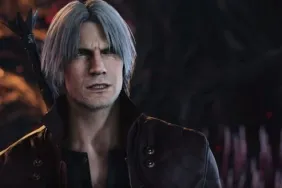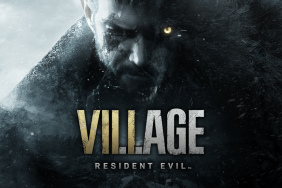Folks, over the course of this piece I’m going to spoil the hell out of Devil May Cry 5. If you haven’t played it yet, well, here’s your warning.
Okay, welcome back! Presumably, you’ve finished Devil May Cry 5 and are doing that thing where your hype energy hasn’t faded away yet, so you’re scouring the internet for new takes and content revolving around the thing you love. I’m thrilled to contribute to that with the second entry of PlayStation Lifestyle’s “Our Favorite Characters” series, in which the staff goes in on their favorites. In my case, perhaps fresh off the glow of Capcom’s latest controller-ruining masterpiece, my mind immediately went to Dante. After all, there aren’t many I’ve spent so much time with. But then, I thought about it some more. As much as our boy Dante is the greatest of all time, I think Nero gets my Satisfactory Character and Gameplay Development juices flowing a lot more. Despite only being in two of the five games, Nero is Hideaki Itsuno’s glue that holds his vision for the series intact, is the backbone of this crazy party, and is a Devil Hunter after my own heart.
“I think you’ll blush a pretty pink when I kick your ass!”
When Nero was first introduced, he was just as controversial as any beloved protagonist swap can be. The people love Dante, and he’s the poster boy for one of Capcom’s most insularly loved series. Bringing out a new, even snarkier white-haired kid with headphones and a hood on his trenchcoat rubbed some fans the wrong way. The reaction to Nero was a far cry from that of “Donte,” but the kid still had a hill to climb to win people over. A big part of that uphill battle being a success is how playing as Nero upended the Devil May Cry gameplay style.
The thing about Devil May Cry is that it took three games for the series to develop a true identity. The combat, while it has seen significant changes, has more or less maintained its core concept throughout. The crux of Devil May Cry is forcing the player, through an exciting but harshly judgmental scoring system, to explore the breadth of their capabilities. More than any other character action game, Devil May Cry really wants you to think about what you can or can’t do as every second of combat passes.
This is the style system, the divine force that has nothing to do with what else is happening, but has everything to do with how the player feels about what they’re doing with their controller. Here’s your option for closing space. Here’s your double-jump, but it only works in certain conditions. Here are your launcher and your juggle options. Here are some variations on your sword combo. Here’s how guns work. Now put it all together, but don’t do the same sequence twice in a monster room or you suck. I love it.
Jackpot!
While the core concept hasn’t changed (the scoring system has, slightly), what has changed is the main character himself. Dante honestly has like, four different personalities or interpretations, and that’s not counting that myopic, homophobic, xenophobic reboot version (here, have some receipts) that, well, remains divisive to say the least. The series ran through multiple directors as it developed, and started as a Resident Evil sequel.
Dante’s original debut was helmed by Bayonetta and Resident Evil 2 director Hideki Kamiya, who has a very specific and distinct style. Wacky stuff happened in the first game, but Dante himself was more like a badass through the eyes of a powerful nerd.
The second game was a disaster in terms of creative leading, with Itsuno coming in at the last possible second to try and salvage it. He did the best he could. That Dante was more stoic and gritty, for some reason.
Then there’s Itsuno’s younger Dante, who is basically an anime boy Ninja Turtle. Finally, we have Dante as he appears in the fourth and fifth games, which is really where Dante has some real consistency for the first time. He’s basically just an older Ninja Turtle, but he also has some wisdom and righteous anger tucked away under that duster.
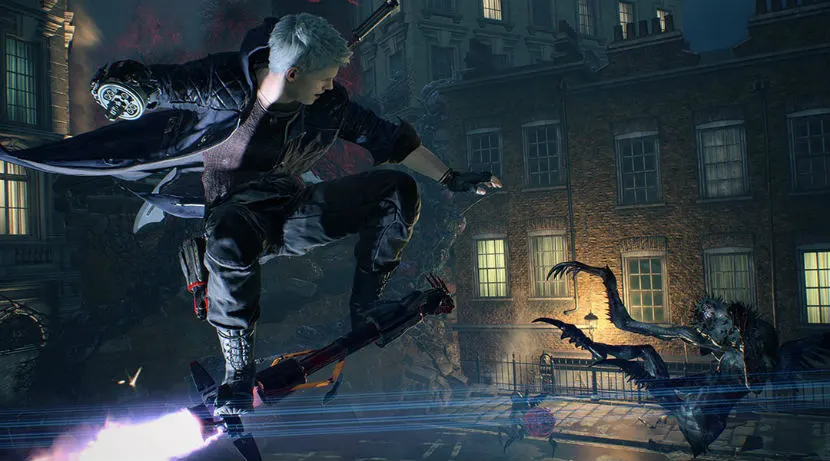
“You got a jacked up notion of fair play pal, and it’s beginning to piss me off.”
My take is this: Itsuno was largely exploring in Devil May Cry 3, and once it revitalized the IP, he really got to dive into himself for the fourth game. This is where that directorial vision kicked in. Itsuno took the ideas he introduced and played with in the third game, and built a mythology and a narrative path. The avatar of that clarity and direction is Nero, a character who represents that balance both from that abstract, creative standpoint, as well as his place in the game’s actual story.
Now back to that upheaval thing, Nero totally changed how Devil May Cry played. Dante is a walking bag of tricks, with his moveset rapidly expanding as he moves through each game, finds new weapons, and learns to swap between styles. His whole deal is adding tools upon tools to that strict core, giving the player more and more ways to trick that style rating into staying afloat and reaching that “SSS” more easily as the player’s options expand. Nero is not that.
Nero has a significantly smaller moveset compared to Dante. He feels, at first, like an inferior Dante. What he can do mirrors the impression many fans had when Nero was first introduced. He’s less good Dante, he’s a twerp, and he’s less cool by content volume. He is, as Dante tells him in the pivotal opening sequences in Devil May Cry 5, “dead weight.” But in reality, Nero isn’t dead weight at all. He’s pure potential and the true spirit of Devil May Cry’s emphasis on creativity. It’s time to talk about the Devil Bringer and the Red Queen.
What’s the point of packing a sword like that if you’re not even gonna use it?
Nero, like Dante, has a melee weapon and a ranged weapon. Unlike Dante, Nero’s don’t change. He sticks with what he has at the beginning. His sword, the Red Queen, literally can be revved up like a motorcycle, which lights the damn thing on fire for a momentary power boost. This adds an element of strategy to Nero’s combat without adding a new tool. Instead, the player incorporates the revving into their core play.
Nero also has a new toy, the Devil Bringer. In the fourth game, this is Nero’s marquee gimmick. It adds the element of grappling, something Capcom has an impactful history with, to the swords and bullets style of the series to that point. Not only does Nero get to do sick grappling/wrestling moves at the press of a button, but he also gets a distance grappling technique. Based on the size of the enemy, Nero can sling himself across the battlefield (or bring enemies to him) without compromising his style rating. It’s a tool to defy gravity and the usual laws of movement, while extending combos in creative ways while still managing that comparatively smaller moveset. It feels like what was in place before, but simultaneously more gimmicky and more distilled.
We learn through the course of Devil May Cry 4 that Nero’s Devil Bringer comes from a link with Yamato, the demonic sword used by Dante’s brother Vergil. Vergil is almost 100% absent from that game, which is jarring due to his importance in both the first and third games. But, as we learn in Devil May Cry 5, the shadow of Vergil has always hung over Nero, in ways that were quietly telegraphed the whole time. Nero has been, through his spotlight position in the fourth game and his explosive importance in the fifth, the key to everything between young Dante, the PlayStation 2 original, and new wacky Ninja Turtle uncle Dante.
The fun part about this is that, in the road leading up to Devil May Cry 5, Nero’s lore-friendly gimmick was hidden behind a new gimmick, one that obfuscated Nero’s true purpose in the story. He loses the Devil Bringer and has it replaced with the Devil Breaker, a much more video game type tool that turns Nero’s arm into a ridiculous, anime multi-tool. This plays into the story, as Nero, the “dead weight,” struggles for his sense of self as much as he does against the giant blood demon.
When he does find his self, well beyond the revelation that Vergil is his father and Dante really is his weird Ninja Turtle uncle, he finally gets to take a page from Dante’s book as the Devil Bringer comes back and the Devil Breaker becomes a new tool that merely supplements it. Nero, in the Devil May Cry 5 post-game, becomes the ultimate version of himself and finally forms that connection between himself and Dante that everyone was hoping for all this time.
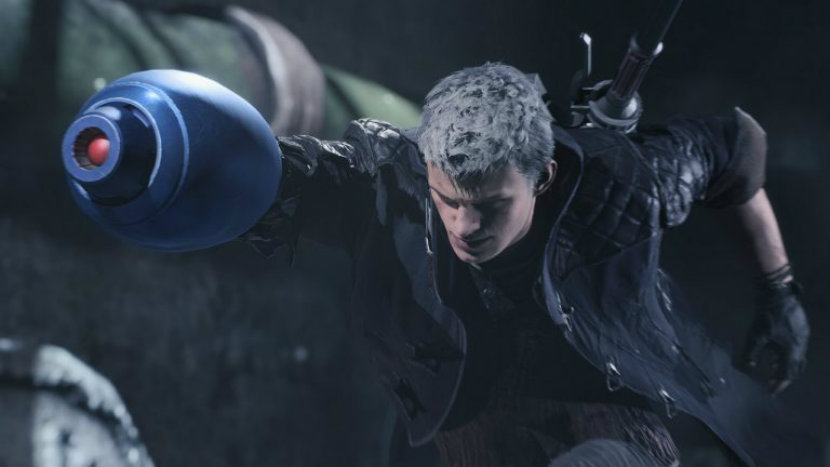
“That Bastard called me dead weight! I didn’t come all this way for nothing!”
When I started thinking about this piece, I was sure it would be all about Dante, the wise-cracking, dancing fool we all know and love. Then I realized, when I thought about it more, that Devil May Cry 4 is what really made this series for me. When I thought about why, I realized how much I truly love Nero as a character. His struggle to be as cool as Dante exists both in and outside the fiction of the games, but below the surface I found myself more clearly recognizing what Devil May Cry really is through playing as Nero. Devil May Cry is a formative experience for me as someone who looks at games critically, and Nero is at the eye of that storm. Plus, he has the best brainbuster suplex I’ve ever seen in a video game. That has to count for something.
